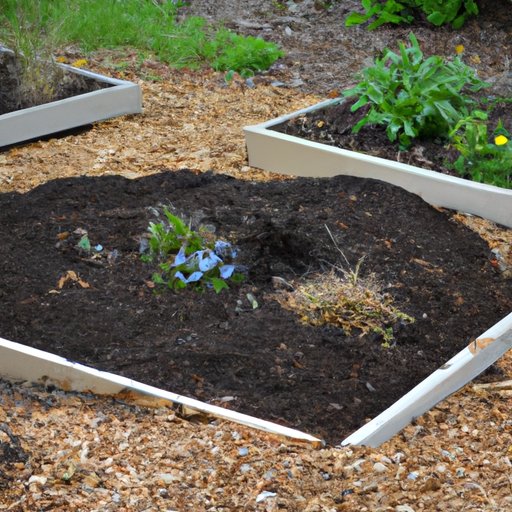Introduction
A flower bed is a designated area of your yard or garden that is planted with flowers and other ornamental plants. It is a great way to add color and beauty to your outdoor space. Starting a flower bed can be an exciting and rewarding project, but it can also be overwhelming if you are just starting out. This article aims to provide step-by-step instructions on how to start a flower bed, from researching the best flowers for your climate to adding compost and mulch to help retain moisture.

Research the Best Flower Varieties for Your Climate
The first step in starting a flower bed is to do some research on the best flower varieties for your climate. Different flowers require different levels of sunlight, water, and temperature, so it’s important to know what will thrive in your area. Consider the average temperatures in your area, as well as the amount of rainfall and sunlight, when selecting your flowers.
You can also research flower varieties that are suitable for your climate. Talk to your local nursery or gardening center, or search online for flowers that are known to do well in your area. Once you’ve identified a few potential flower varieties, read up on their specific needs and make sure they’ll work for your flower bed.
Plan the Shape and Layout of Your Flower Bed
Once you’ve done your research and identified the best flower varieties for your climate, it’s time to start planning the shape and layout of your flower bed. You’ll need to determine how much space you have to work with, and then decide on a shape and layout for your flower bed. Think about the overall look you’re trying to achieve, and plan accordingly.
If you’re feeling overwhelmed, it might be helpful to draw a simple diagram of your flower bed to get an idea of what it could look like. This will help you visualize the different elements and determine the best placement for each flower. When you’re ready, mark off the area with stakes and string so you know exactly where to begin planting.
Prepare the Soil Before Planting
Before you start planting, it’s important to prepare the soil. Test the pH level of the soil to make sure it’s suitable for the type of flowers you’ll be planting. If the pH level is too low, you can add lime to raise it. If it’s too high, you can add sulfur to lower it.
You may also want to add compost or manure to the soil to increase its fertility. This will help ensure that your plants have the nutrients they need to grow and thrive. Finally, use a tiller to loosen up the soil and make it easier to plant in.
Choose the Right Spot and Sunlight Conditions
Once the soil is prepared, it’s time to choose the right spot for your flower bed. Look for an open, sunny spot that gets at least six hours of direct sunlight per day. Avoid areas with standing water, as this can lead to root rot and other problems. Also, be aware of any trees or shrubs nearby that may cast shade over your flower bed.

Plant in Groups with Spacing in Mind
When it comes time to actually plant your flowers, group them together based on their similar needs. For example, put all the sun-loving flowers together, and all the shade-loving flowers together. This will make it easier to care for them, since they’ll all have the same basic requirements.
It’s also important to research the appropriate spacing for each variety of plant. You don’t want to overcrowd your flower bed, as this can lead to competition for resources and cause your plants to struggle. Follow the recommended spacing guidelines for each type of flower, and leave enough room between them for air circulation.

Add Compost and Mulch to Help Retain Moisture
Finally, add some compost around the base of your plants to give them a boost of nutrients. You can also cover the soil with a layer of mulch to help retain moisture and keep weeds at bay. Both of these steps will help your flowers stay healthy and vibrant.
Conclusion
Starting a flower bed doesn’t have to be complicated or intimidating. With the right research, planning, and preparation, you can create a beautiful and colorful garden in no time. Research the best flower varieties for your climate, plan the shape and layout of your flower bed, prepare the soil before planting, choose the right spot and sunlight conditions, and plant in groups with spacing in mind. Add compost and mulch to help retain moisture, and enjoy your beautiful flower bed.


